Total Solar Eclipse 2017: Path, Viewing Maps and Photo Guide
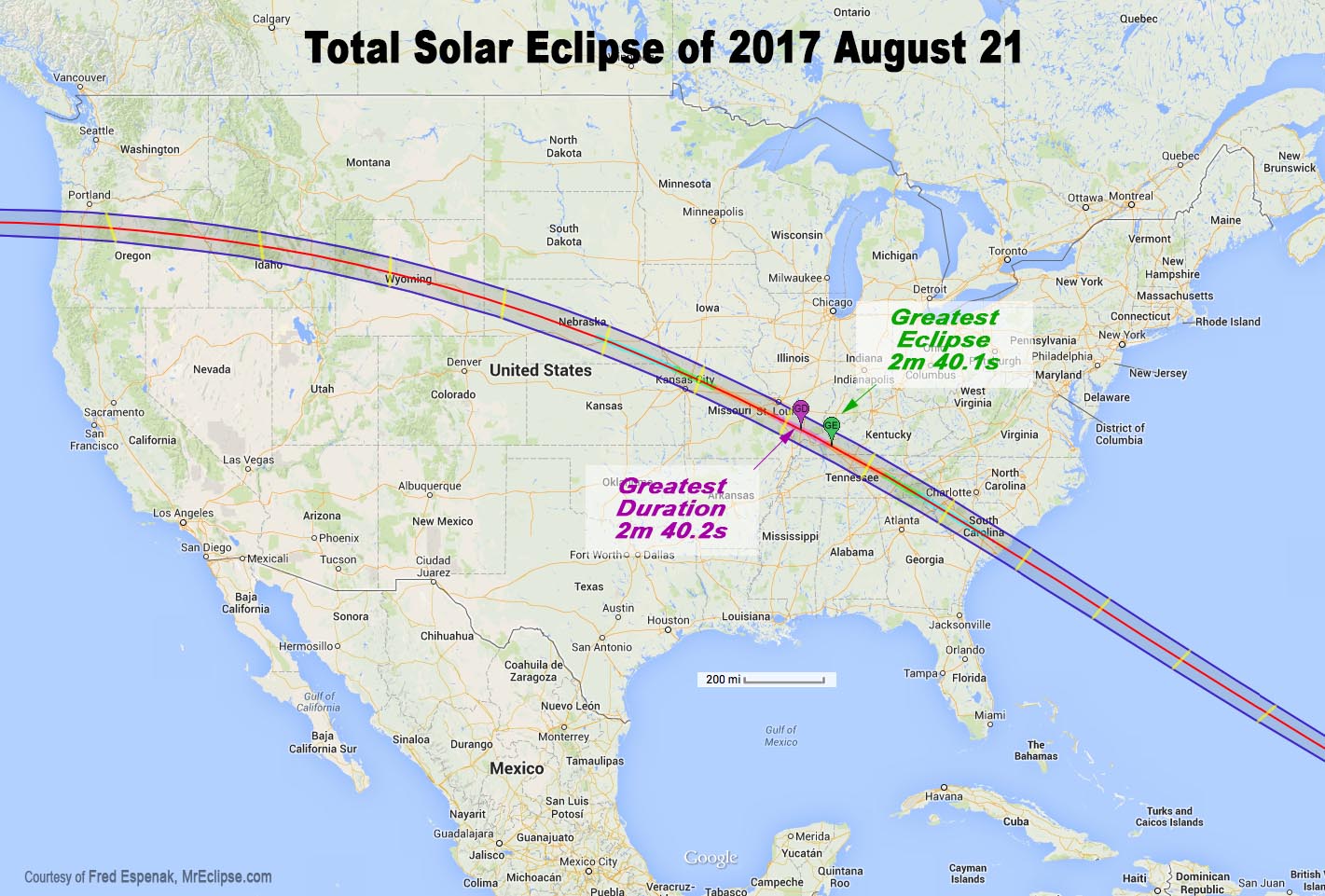
Get Ready for the Total Solar Eclipse of 2017!
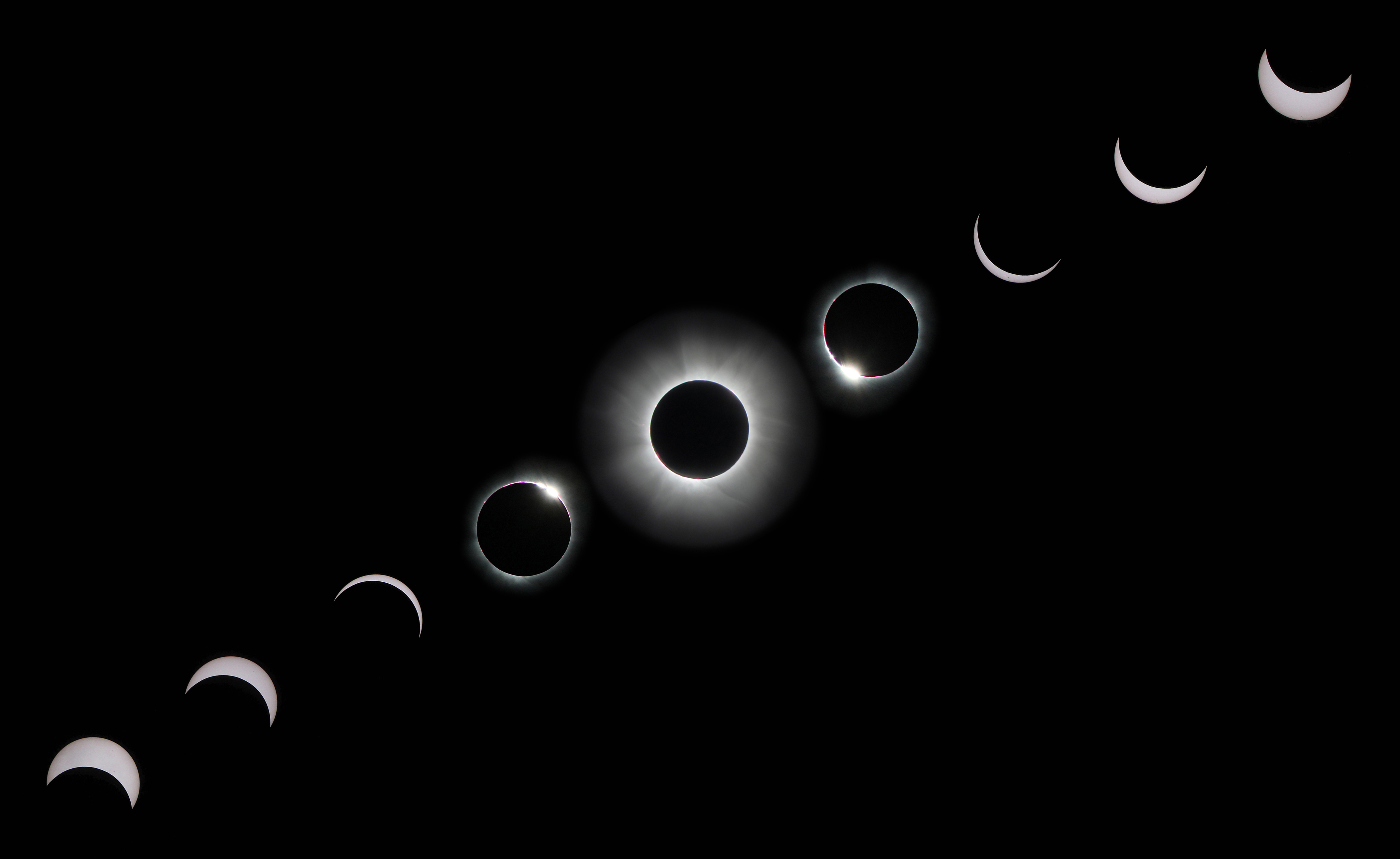
On Aug. 21, 2017, the "Great American total solar eclipse" will treat skywatchers across the continental United States as the moon passes before the Sun. This photo guide is packed with information about the historic event, including maps, charts and infographics to help you safely and successfully observe the solar eclipse. See our full viewing guide for the 2017 total solar eclipse here.
The Sun's Atmosphere
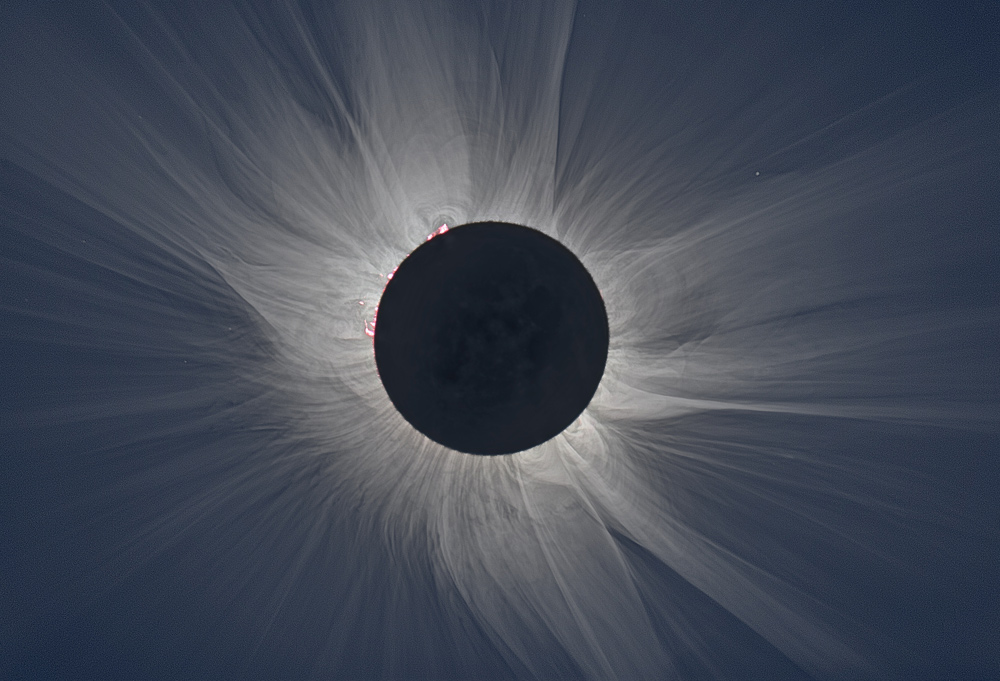
During the total solar eclipse, skywatchers will see the sun's atmosphere, which is typically hidden from view. The atmosphere features jets and streamers of hot gas that are difficult to resolve in photographs. This composite image makes them visible.
The Path of the Total Solar Eclipse
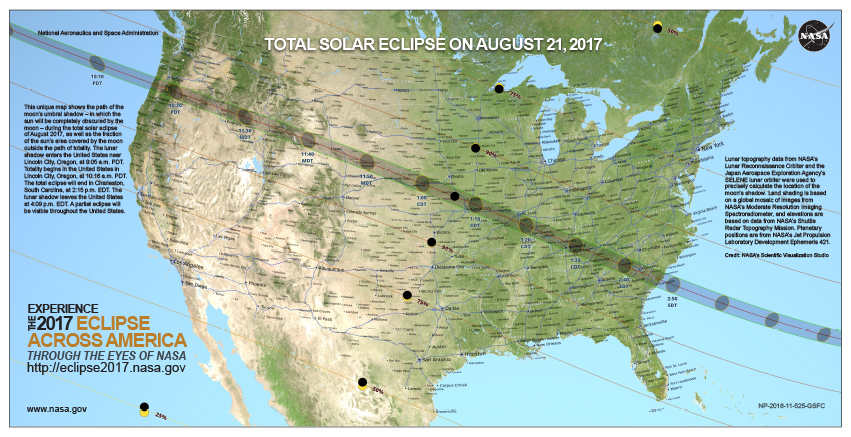
This map shows the path of the moon's shadow during the Aug. 21, 2017, total solar eclipse. Viewers in the shaded region will see the eclipse reach totality, when the moon completely covers the disk of the sun. The time and duration of totality depend on where you are located inside the path. Outside the shaded region, viewers will see a partial solar eclipse.
Eclipse Traffic
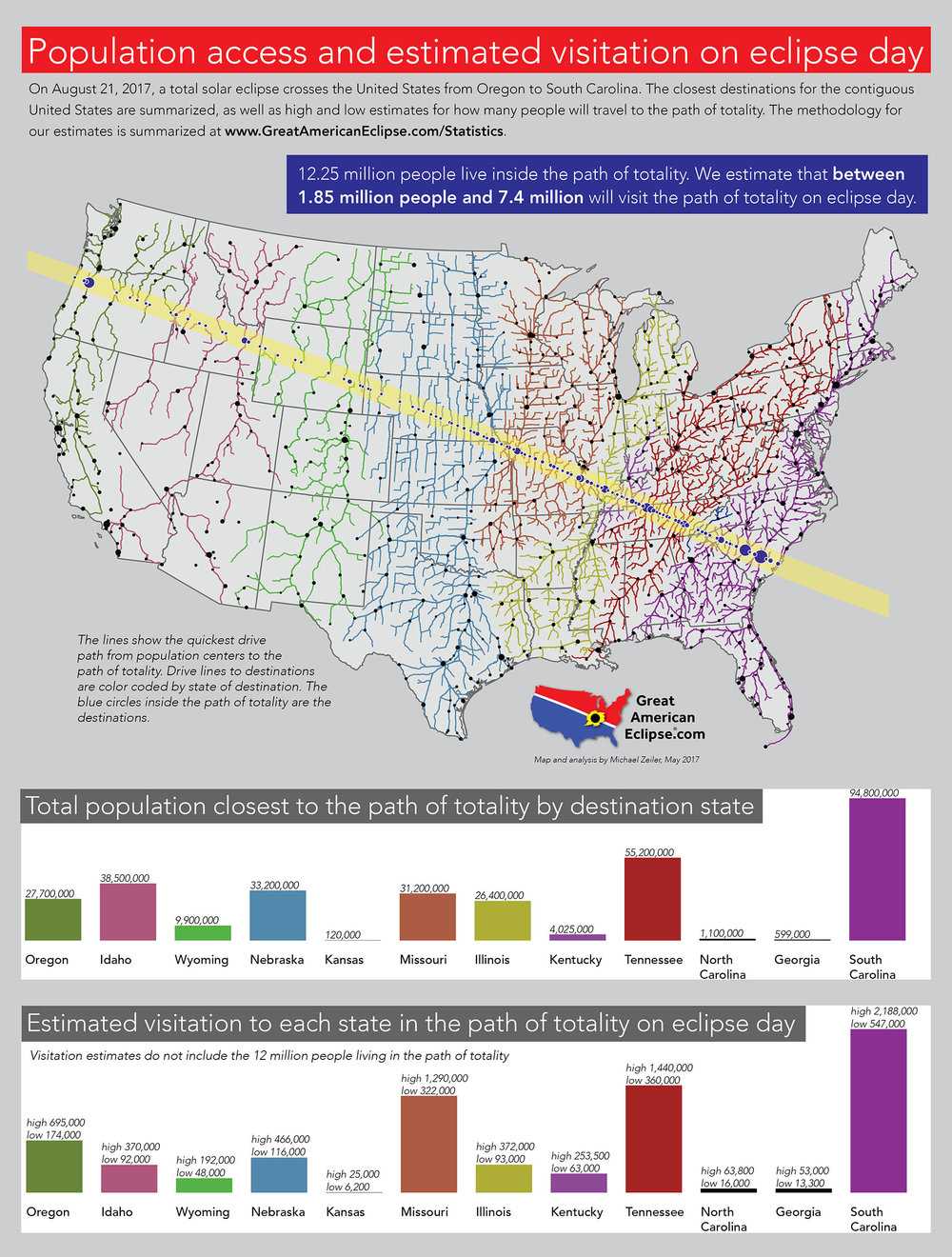
Anyone planning to drive to see the total solar eclipse should plan to encounter lots of traffic. Aug. 21, 2017 could be one of the worst traffic days in U.S. history, as millions of people are expected to commute into the path of totality. This graphic, by eclipse cartographer Michael Zeiler created this graphic showing major roadways leading into the eclipse path from highly populated areas.
Photographing the Eclipse

This image of a total solar eclipse was taken eclipse photographers Imelda Joson and Edwin Aguirre on July 11, 1991, in Baja California Sur, Mexico. While it is possible to photograph the eclipse, most experts recommend that you simply enjoy it, especially if it's your first time seeing a total solar eclipse.
How to Look at a Solar Eclipse Without Going Blind (Infographic)
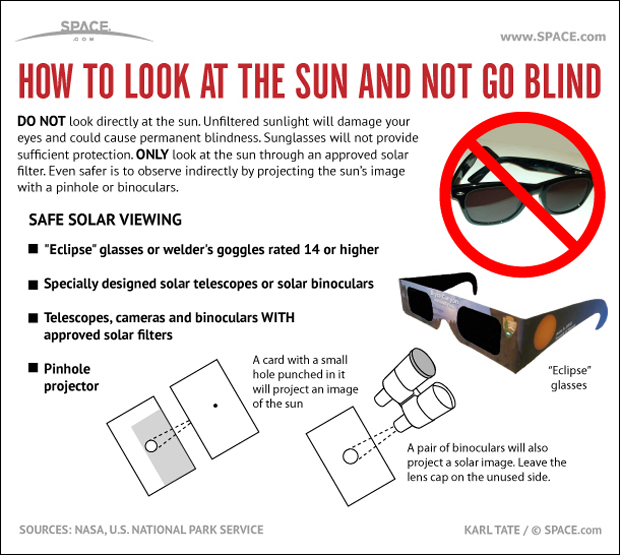
You should never look directly at the sun, but there are ways to safely observe an eclipse. See how to safely observe a solar eclipse with this Space.com infographic.
Total Solar Eclipse Path
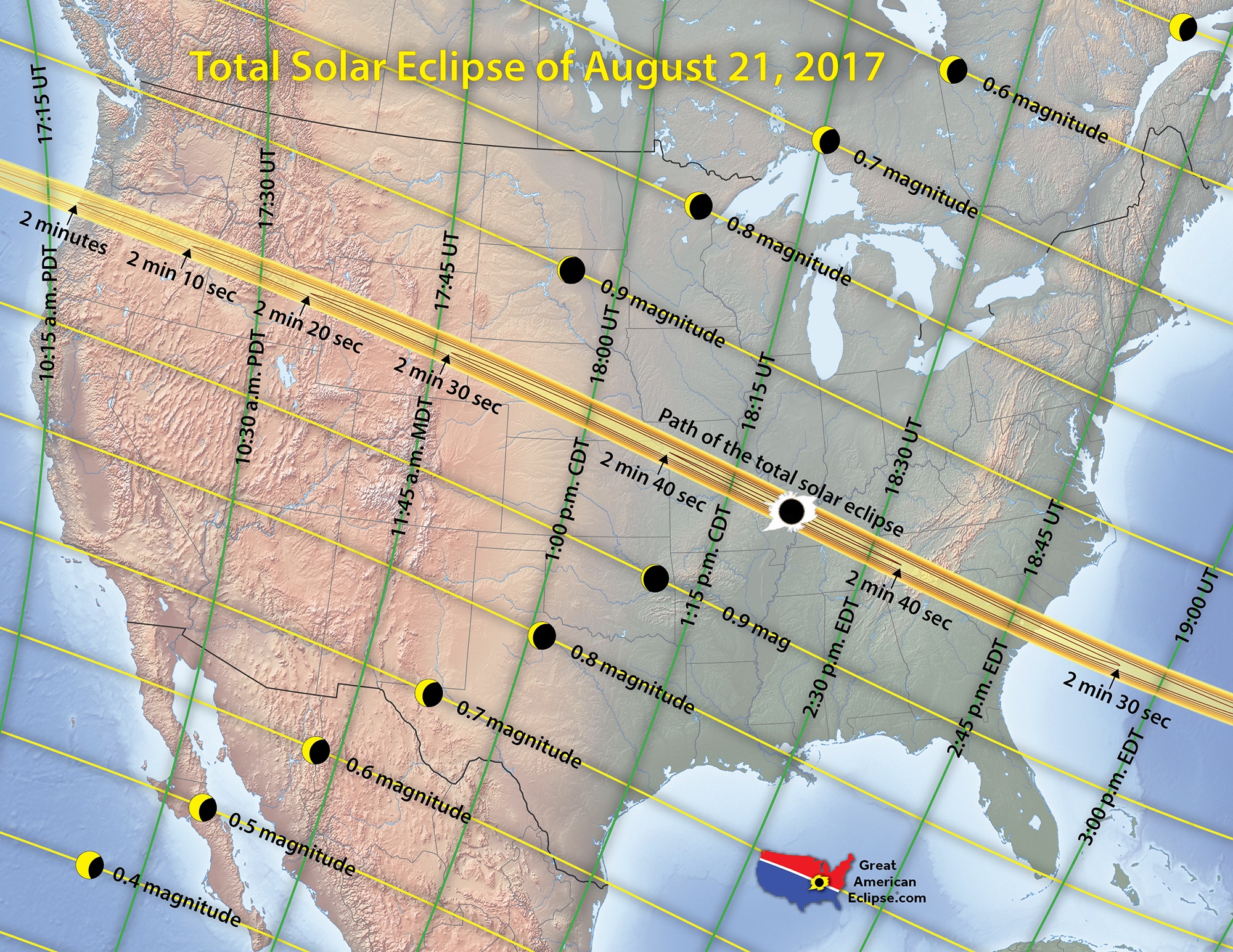
The total solar eclipse of 2017's path of totality, stretching from Oregon to South Carolina. [Total Solar Eclipse 2017: When, Where and How to See It (Safely)]
Get the Space.com Newsletter
Breaking space news, the latest updates on rocket launches, skywatching events and more!
Start of Partial Eclipse
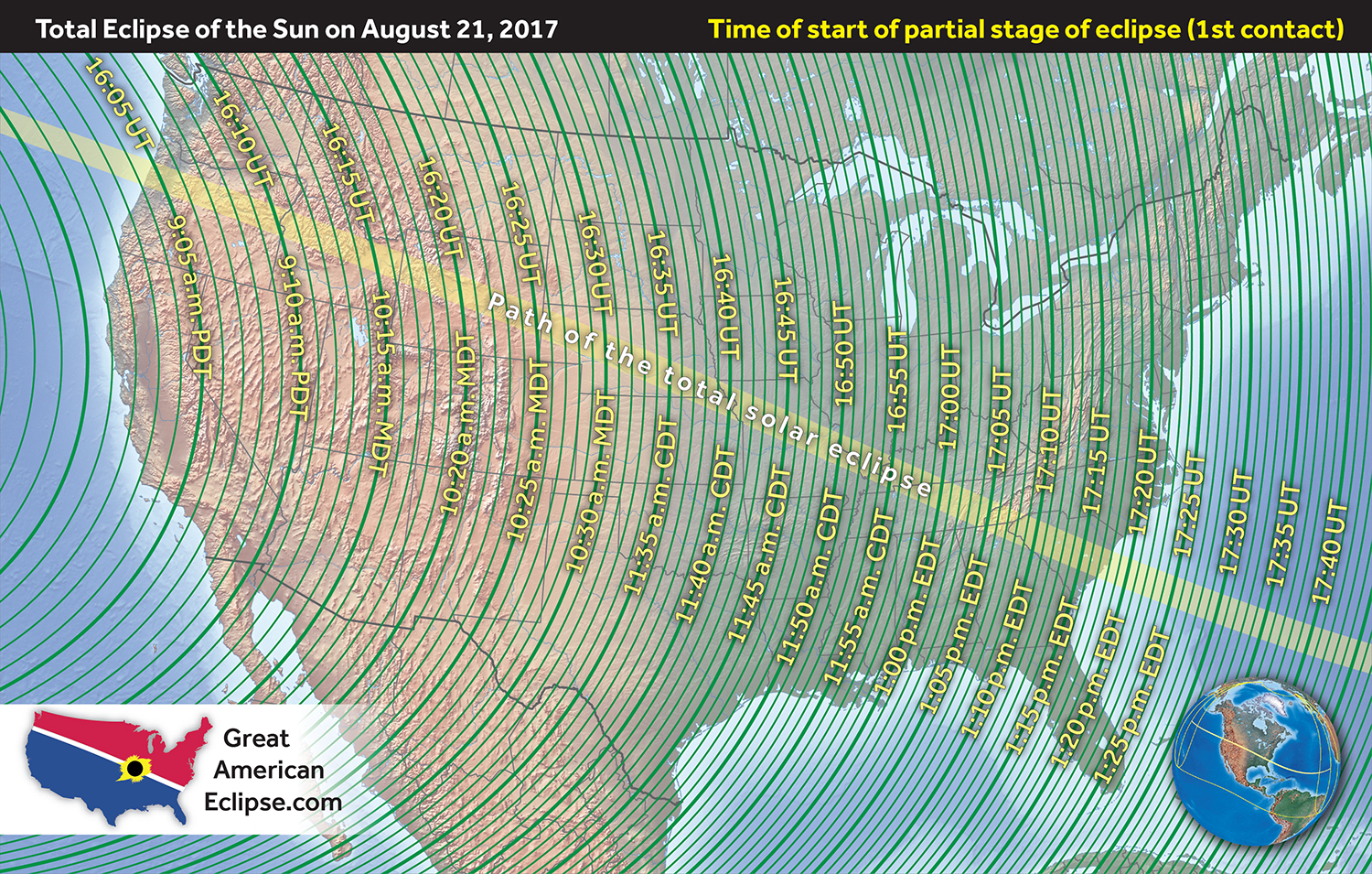
This map shows the different times at which the solar eclipse will begin across the United States.
Time of Local Greatest Eclipse
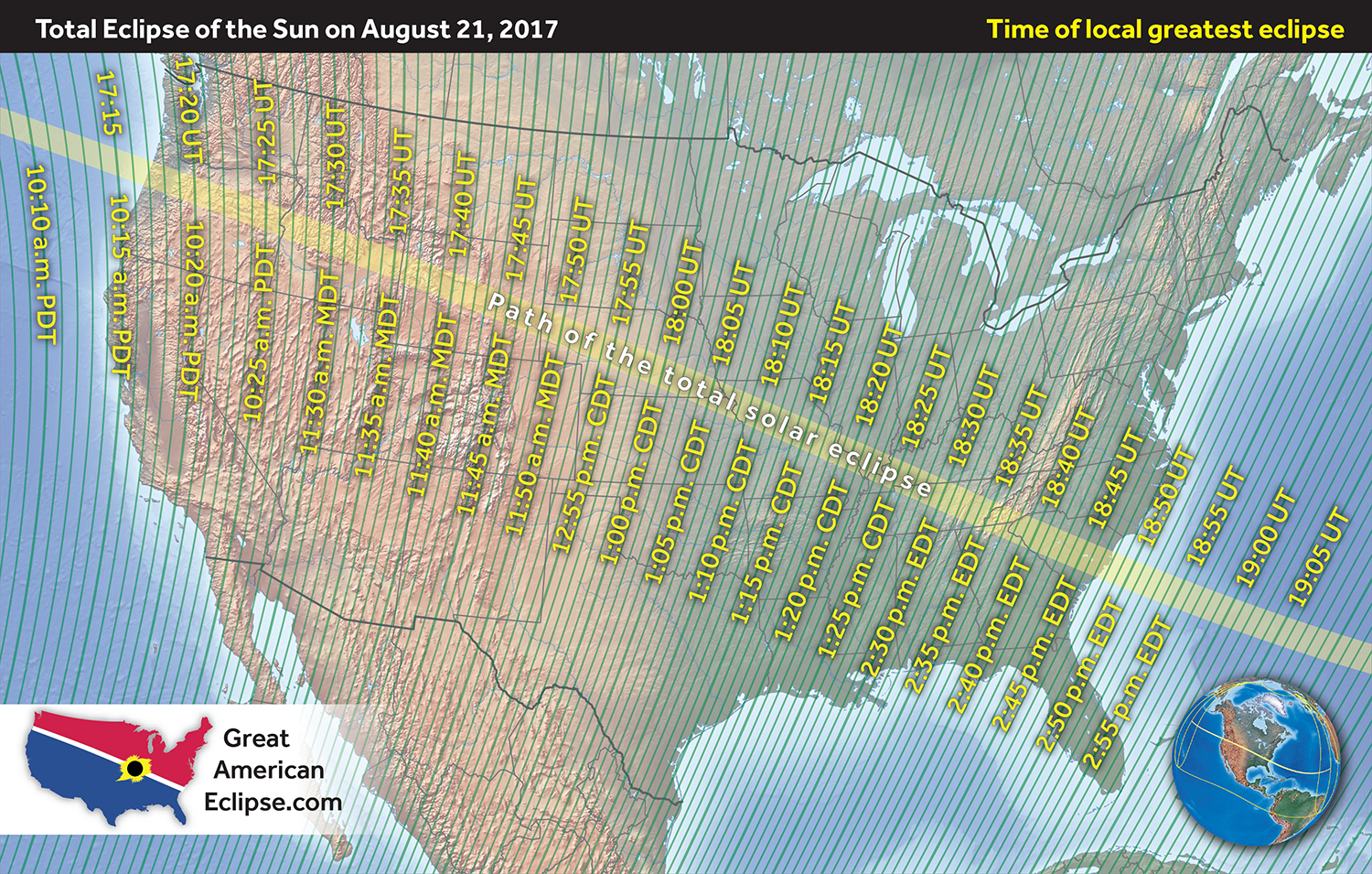
This map shows the different times at which the solar eclipse will be at its peak across the United States.
End of Partial Eclipse
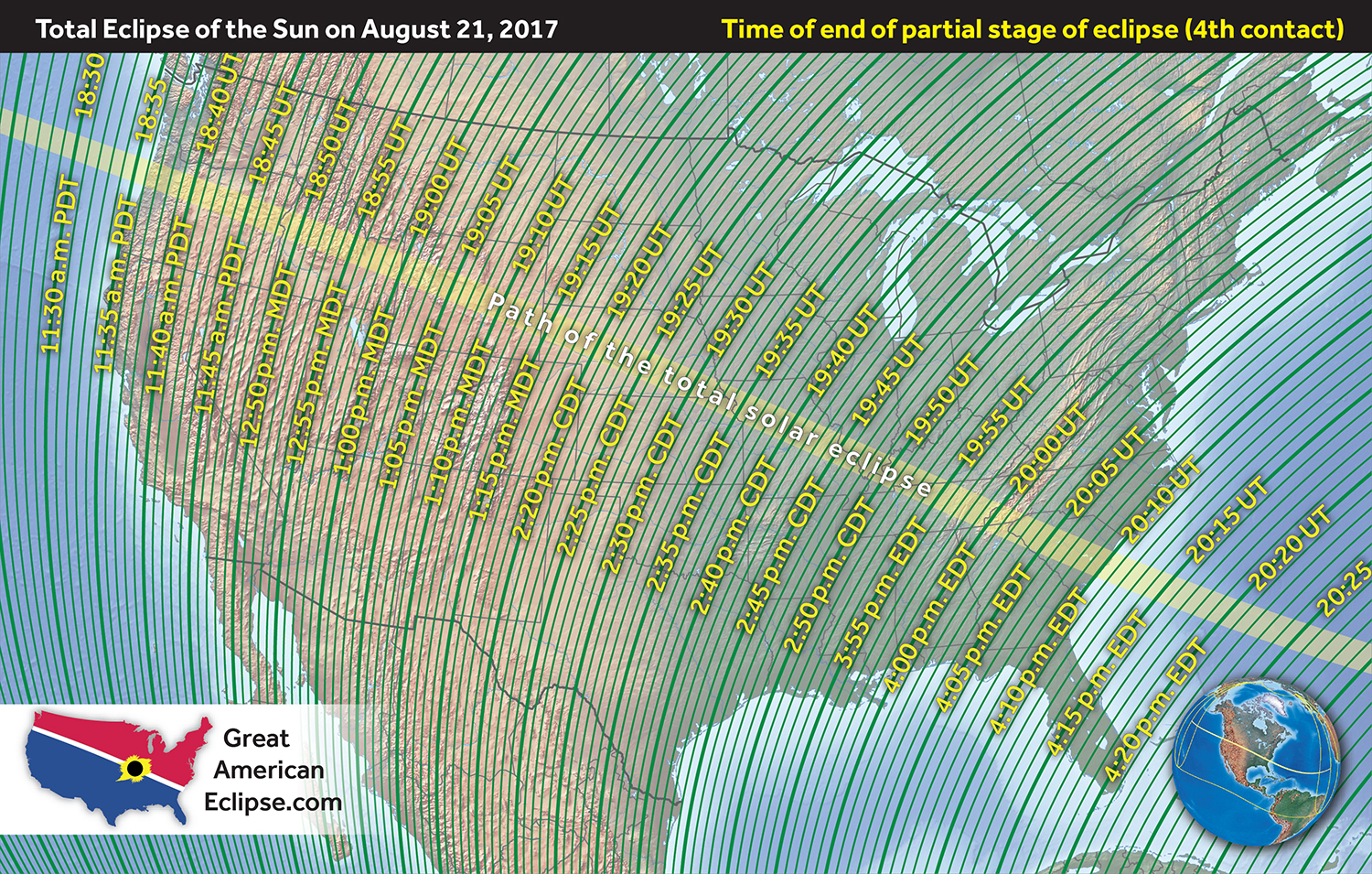
This map shows the different times at which the solar eclipse will end across the United States.
Eclipse Schedule
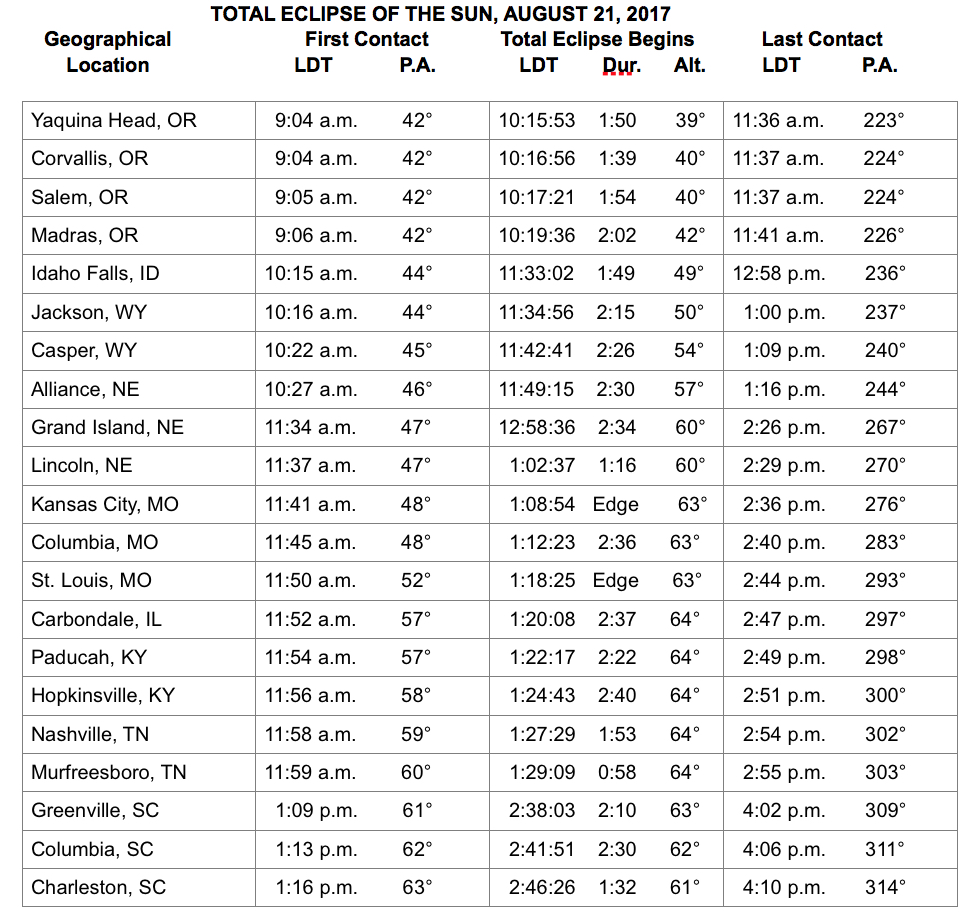
This table shows where, when and for how long the Great American total solar eclipse of 2017 will happen in major cities across the path of totality.
Join our Space Forums to keep talking space on the latest missions, night sky and more! And if you have a news tip, correction or comment, let us know at: community@space.com.

Hanneke Weitering is a multimedia journalist in the Pacific Northwest reporting on the future of aviation at FutureFlight.aero and Aviation International News and was previously the Editor for Spaceflight and Astronomy news here at Space.com. As an editor with over 10 years of experience in science journalism she has previously written for Scholastic Classroom Magazines, MedPage Today and The Joint Institute for Computational Sciences at Oak Ridge National Laboratory. After studying physics at the University of Tennessee in her hometown of Knoxville, she earned her graduate degree in Science, Health and Environmental Reporting (SHERP) from New York University. Hanneke joined the Space.com team in 2016 as a staff writer and producer, covering topics including spaceflight and astronomy. She currently lives in Seattle, home of the Space Needle, with her cat and two snakes. In her spare time, Hanneke enjoys exploring the Rocky Mountains, basking in nature and looking for dark skies to gaze at the cosmos.









